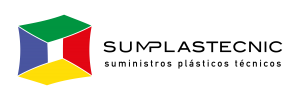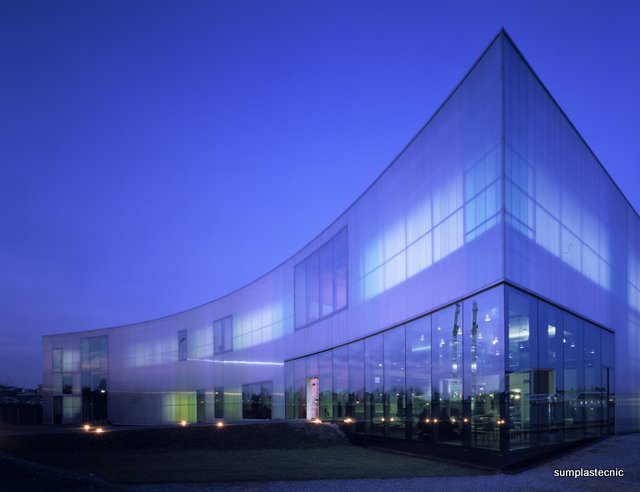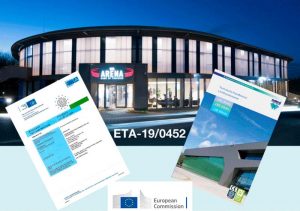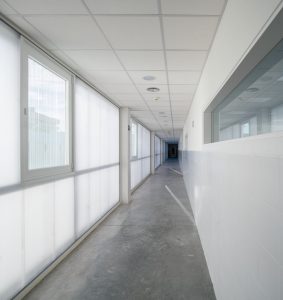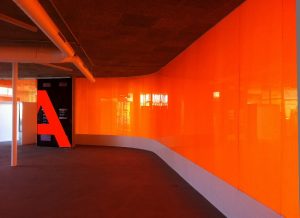
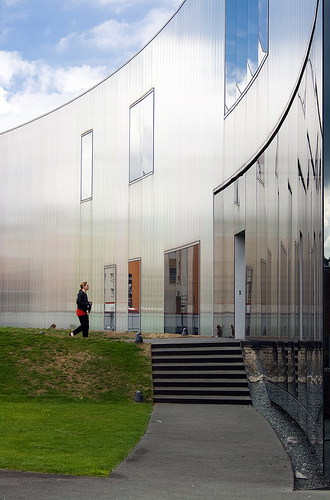
Material Sumplastecnic:
SISTEMA MODULAR POLICARBONATO RODECA COLORES

NOMBRE PROYECTO: LABAN DANCE CENTER – LONDON
CLIENTE: Conservatorio de Música y Danza Trinity Laban
AUTORES DEL PROYECTO: Herzog & de Meuron
FECHA: 2000- 2003
INGENIERIA: ARUP
FOTOGRAFÍAS:Dennis Gilbert Peter Durant Margherita Spiluttini , VARIOS
160 Laban Dance Centre
London, UK
Competition 1997
Project 1998-1999
Realization 2000-2003
Deptford’s St.Paul’s Church becomes an important point of reference for the new complex. The large, embracing gesture of the Laban building volume gives the effect of creating a spatial limitation as well as a melting together of Laban Garden and Laban Centre. The topographically shaped structure of the garden – simultaneously serving as an entrance yard for the Laban Centre and a place for walking, playing or leisure – finds corresponding qualities in the interior gestalt of the building.
All activities are intermixed and distributed on only two main levels. This promotes communication within the entire building. The large theater, the heart of the Laban organism, is located in the center of the building: the orientation point in the open “cityscape” of the first floor. The library, cafeteria and also parts of the production facilities and the administration are, through the use of transparent and translucent walls, to be structured rather than separated. The upper story houses most of the studios creating a dense fabric, like that of an urban center where each studio has a different size, height, form and color.
The two spiral-shaped connecting stairways are laid out generously enough to become places for encounters. Two planted yards are cut in at different depths; they provide daylight to the interior and enable visual connections and a spatial orientation throughout the entire building. They mark the locations where the stairways access the main stories and the planted roof area.
Colors determine the rhythm and orientation both inside and outside the building. Because we wanted to give color such an importance for the entire piece of architecture we decided to collaborate with an artist who should bring in his specific thinking and expertise. In previous projects we’ve had interesting collaborations with Rémy Zaugg for the Roche Pharma-Research Building in Basel, and with Adrian Schiess for the Extension of the Head Office for Helvetia Patria in St. Gallen, Switzerland. For Laban we contacted Michael Craig-Martin, whose work we got to know and admire over the last few years, also because his approach to color seemed so different to our previous experience.
The exterior façades consist of transparent or translucent glass panels, depending on whether the space behind them requires a view. Colored, transparent polycarbonate panels are mounted in front of the glass panels and serve as a protective shield (against sun, glare, and heat radiation) and contribute to the overall energy system. The shadow images of the dancers, which will fall onto the matte glass surfaces of the interior walls and façades, have a magical effect and play an active part of the Laban’s architectural identity.
Herzog & de Meuron, 2003
